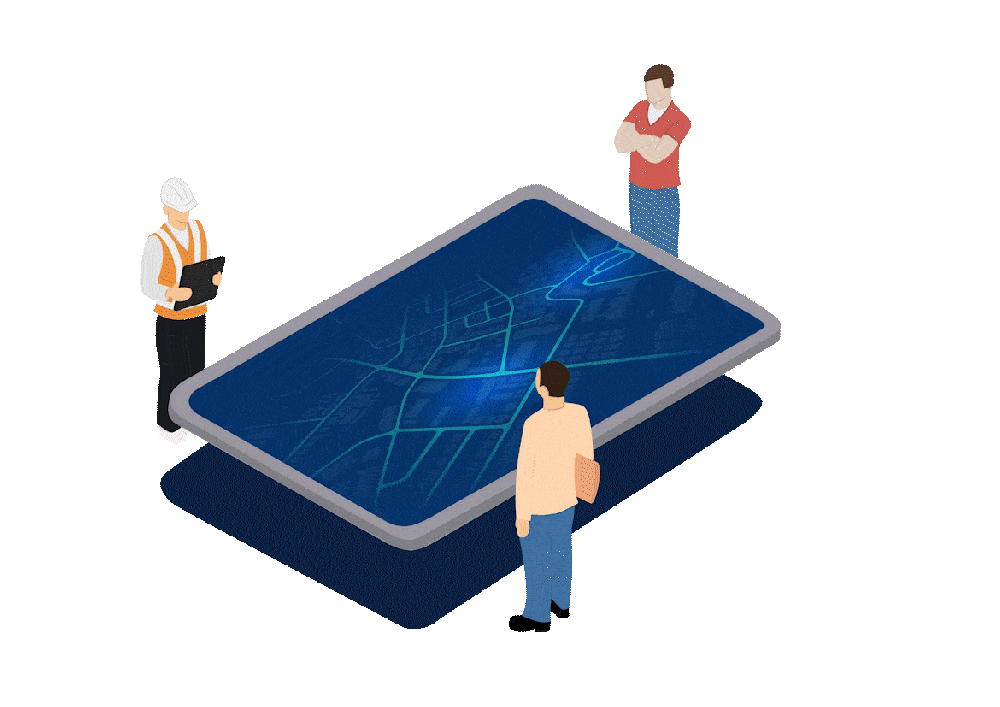Energy efficiency and conservation are important to meet global targets for reducing greenhouse gas emissions, fossil fuel use, grid load, and prices. There are a wide range of additional advantages including reduced Carbon Footprint, decreased power costs, etc. In order to maximize energy efficiency, cut expenses, and pave the road for a sustainable future, AI has emerged to be a potent ally.
Energy Efficiency Revolutionized by Smart Buildings
The use of AI to optimize energy use in office and residential buildings has enormous potential. To predict and improve HVAC systems, machine learning algorithms may be used to analyze data from sensors, weather predictions, occupancy patterns, and past energy consumption. AI systems may learn continuously, adapting to shifting variables like temperature changes and occupancy levels to save energy while maintaining a comfortable interior environment.
Industrial Process Efficiency
AI can reduce energy use in several sectors by carefully monitoring and managing a wide range of operations. Machine learning algorithms can recognize actions that use a lot of energy, find inefficiencies, and suggest changes. For instance, AI may adjust the timing of industrial processes to lower peak and total energy use. The health and performance of equipment may also be monitored by AI-powered systems, opening up options for energy-saving measures like motor speed modifications and process parameter optimizations.
Integration of Renewable Energy Leveraging AI
AI plays a crucial part in the smooth integration of renewable energy sources like solar and wind into the electrical grid as they gain in popularity. Artificial intelligence (AI) systems use historical data and weather trends to anticipate energy generation from renewable sources with accuracy. AI systems optimize the dispatch of energy from renewable sources, guaranteeing effective utilization and reducing curtailment. This information is combined with real-time power demand. AI also helps to forecast and manage the need for energy storage, improve grid stability, and balance supply and demand dynamics.
Intelligent Power Delivery
AI can be crucial for managing grid operations and optimizing energy distribution networks. Utilities can anticipate electricity demand with accuracy by utilizing the capabilities of machine learning algorithms, historical data, and real-time information. This enables them to create a more precise balance between supply and demand, optimize energy-generating schedules, and decrease transmission losses. A stable and robust energy infrastructure can further be ensured by AI’s grid management capabilities, including anomaly detection, equipment failure prediction, and optimized maintenance scheduling.
Towards Efficiency in Transportation
AI is essential for maximizing energy use in the transportation sector, which reduces emissions and fuel use. To improve route planning and driving behavior, machine learning algorithms carefully examine elements such as traffic patterns, road conditions, and vehicle attributes. AI systems’ real-time feedback and recommendations help drivers adopt fuel-efficient driving practices including smooth acceleration and braking. It can also help manage the infrastructure for electric car charging by balancing grid energy demand and optimizing charging schedules.
Benefits:
Numerous advantages result from the deployment of AI-driven energy optimization approaches. First of all, it lowers energy expenditures and consumption, which saves companies a lot of money and results in cheaper power bills for customers. Second, AI helps to promote a cleaner and more sustainable energy ecosystem by reducing energy waste and encouraging the integration of renewable energy sources. Furthermore, AI improves grid stability and dependability, enabling utilities to effectively manage energy distribution and grid operations and guaranteeing a consistent and reliable energy supply. As a final benefit, AI increases operational effectiveness by spotting inefficiencies, streamlining procedures, and automating energy management duties, freeing up human resources for more worthwhile projects.
Energy optimization is ready to undergo a revolution thanks to AI’s revolutionary potential, which will increase efficiency, lower prices, and promote sustainability. Businesses, industries, and utilities may reduce their carbon footprint, save a significant amount of energy, and actively contribute to a more sustainable future by adopting AI technology. The road to optimal resource and energy use can be paved with AI as a reliable partner.
If you’re interested in exploring these technologies and their use cases further, don’t hesitate to reach out to us at open-innovator@quotients.com. We are here to assist you and provide additional information.







